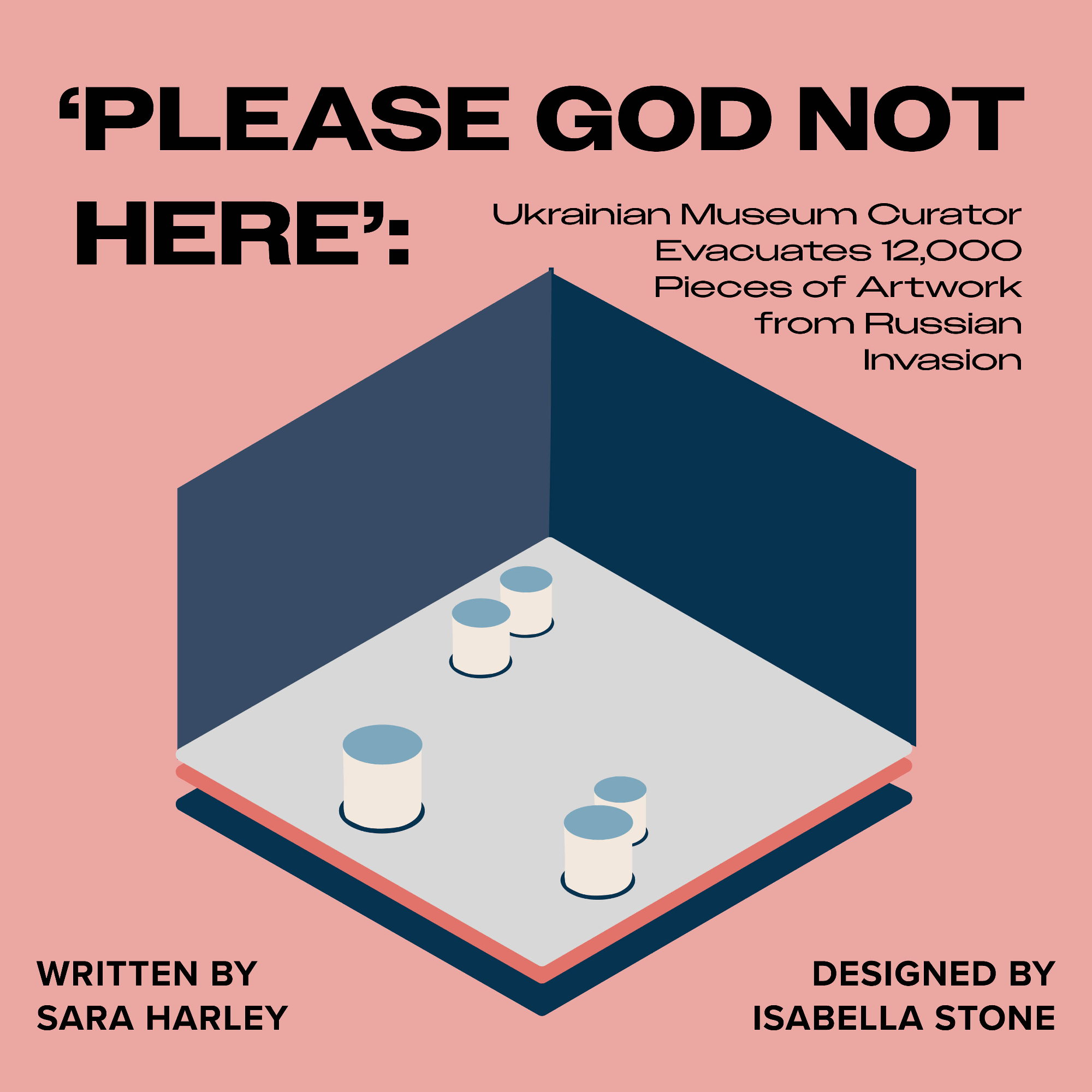
Imagine a museum without art on its walls. What then is its purpose?
This question was answered by Oleksandra Kovalchuk, curator of the Odesa Fine Arts
Museum in Kyiv, during a lecture titled “Heritage Guardians: The Resilience of Ukrainian Museums in Times of War” at the House of Seven Gables in Salem Feb. 18. When the Russian invasion began, she and her team were forced to evacuate 12,000 art pieces in three days. The tone of the room was solemn but hopeful. Among a sea of veterans, there were only a handful of young people in the audience. Kovalchuk used photographs and videos more than words to describe the impact of the Russian invasion. Images of empty museum walls and covered windows helped illustrate the harsh reality of the war.
“To support Ukraine, a country that is struggling,” said attendee Walter Haug when asked why he attended the event. The lecture took place less than a week before the two-year anniversary of the Russian invasion — Feb. 24. According to the United Nations High Commissioner for Refugees, an estimated 14.6 million Ukrainians will need humanitarian aid in 2024.
Kovalchuk highlighted the role of museums in protecting cultural heritage, commemorating history, educating audiences and raising awareness. Presently, most of the museum’s collection is still being held in transportation crates, she said. Most of the space is now used to hold emergency supplies such as water and fire extinguishers to help support Ukrainians in need.
Founded in 1899, the museum Kovalchuk curated is located in the port city of Odesa in southern Ukraine. The institution continues to fundraise and protect other local museums and cultural institutions. Organizers at Odesa have also begun organizing tours of the empty museum space and collecting items to commemorate the current invasion to “speak to new generations,” she said.
Odesa was tragically bombed for the first time July 23, 2022. The museum’s windows were shattered, but the bombs were far enough away that no one was injured or killed.
Nonetheless, 25 architectural monuments were damaged as a result of Russian airstrikes, according to Meduza, an independent Russian news source.
“Ukrainian cultural heritage is at risk for all of the country, museum collections are in danger,” Kovalchuk said.
In the latter half of the lecture, Kovalchuk described hiding with her family as her apartment building shook from the impact of the drones. Luckily, with aid from the United Nations Educational, Scientific and Cultural Organization, the museum was repaired.
But, on Nov. 5, 2023, Russian forces dropped a ballistic missile in an airstrike directly outside of the museum as it was preparing for its 124th anniversary. No visitors or staff were killed in the drone attack that left five people in the city injured, according to the New York Times. It landed streetside and left a hole in the ground several meters deep.
“If the missile would have been dropped five meters closer, it would have been over,” Kovalchuk said while showing a video of the explosion. The bombings damaged 10 other buildings besides the museum.
With tremendous effort, the museum was able to reopen its doors just five weeks later, she said. It had to close off its main entrance and reduce its capacity but celebrated its anniversary with a symbol of hope: a Christmas tree.
Kovalchuk finished her lecture by discussing the museum’s legacy. In case it was ever destroyed, the museum created 3D scans of the space and a digital archive. The Biden administration announced a $300 million aid package to help Ukraine March 12.
The future of Ukraine is uncertain. After over two years of war, it is unclear when the fighting will cease. Even so, Kovalchuk and the staff at Odesa have been, and will continue to be, steadfast to save the legacy of their country’s people and history.